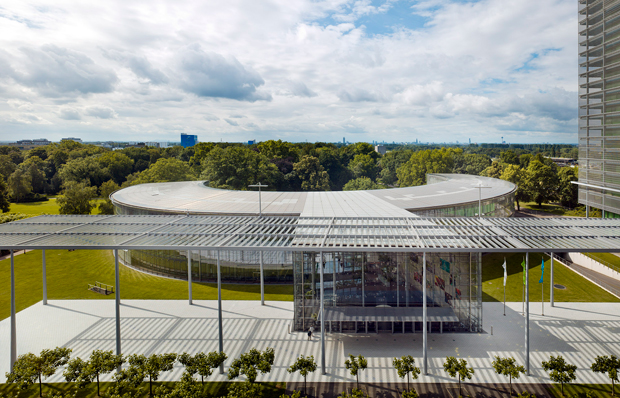
Five buildings that will help you work smarter
Our new Phaidon Atlas focus looks at how architects are helping us break away from the desk and cubicle model
How’s your working environment? As our colleagues over at the Phaidon Atlas make plain in their latest editorial focus, office spaces needn’t be limited to the usual cubicle, desk and chair arrangement common throughout so much of the world. Climbing walls, concrete domed auditoriums and even playful warehouses feature in this round up. Here’s our pick of the practices and projects they’ve selected for special attention. You’ll find plenty more though at the Atlas here. If you want to see all of them, plus a lot more, sign up for a free trial here.
HV Bayer Headquarters, Jahn (above) Trust Bayer, the German pharmaceutical company that first trademarked Aspirin, commissioned Jahn to create a suitably soothing working environment (check out Jahn's site to see their own desirable working environment). In 1998 the firm held a competition for their new headquarters. Jahn’s winning scheme places a semi-elliptical building in the Bayer Park, where a memorial to Bayer’s founder celebrates the company’s roots. To the north, a long pergola reinforces the line of the adjacent street. The steel-framed pergola is covered by polycarbonate louvres that have an integral dichromatic film that refracts coloured light on to the pathway below. A glazed entrance hall becomes the link between the public precinct and the private park. The facade maximizes natural light and ventilation through a twin-shell system. The fully glazed outer and inner glass shells enable natural ventilation, protect against noise, rain and wind, and allow for the placement of sun shades behind the outer shells.
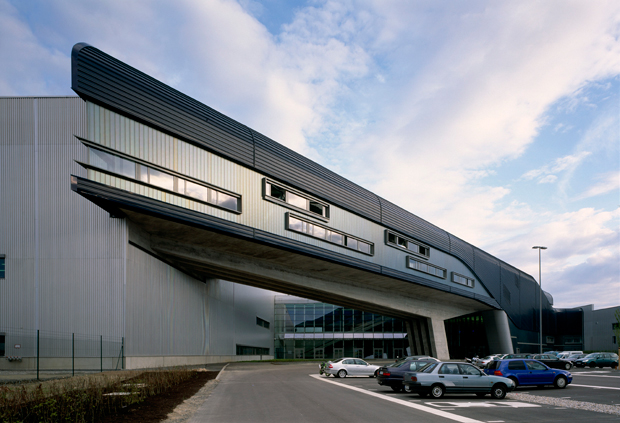
__The BMW Factory Central Building, Zaha Hadid __ This new building provided a socially progressive shared space for workers, management, technicians and visitors on the northern edge of Leipzig, taking advantage of this central German city’s skilled workforce and excellent transport connections. Visitors arrive by car, driving under a dark blue, diagonally projecting portion of the first floor. They are dropped at a glazed public lobby and enter the building. A staircase runs from the front desk to the first floor in the middle of the building; another flight of stairs rises from the cafeteria and crosses over to form the projecting section of the first floor. At ground floor, a void houses the auditing centre, where half-completed cars pass through on a track above, travelling from one production area to another. Every 50th car is pulled off the production line and publicly taken apart for quality-control purposes.
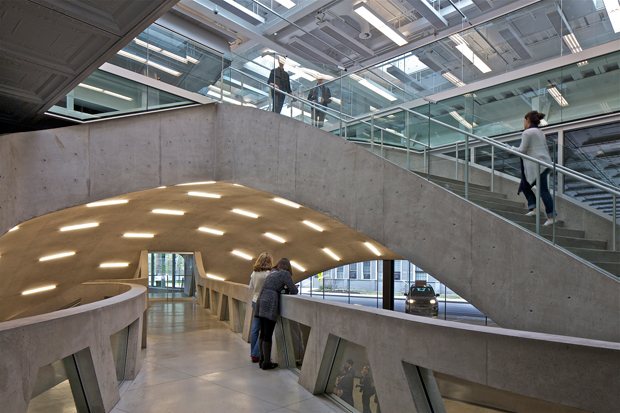
Milstein H all at Cornell University, Office for Metropolitan Architecture Rem Koolhaas’s Office for Metropolitan Architecture (OMA) united Cornell University’s College of Art, Architecture and Planning disparate working spaces in a single, new 14,000m2 creation. Steel trusses support a 15m cantilever, to produce a building that fits in with Cornell’s older architecture, yet remains recognisably new. The main building contains an interior dome of poured concrete that covers the building’s two-storey critique room. The outer surface of the dome provides a seating area for a 282-seat auditorium, which can be protected from strong sunlight by a large curtain and glazing.
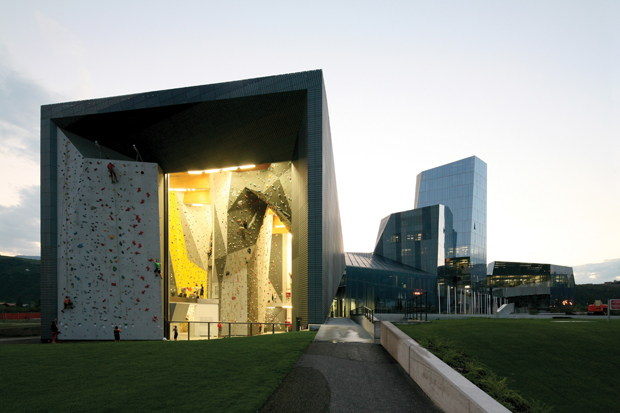
Salewa Headquarters, Cino Zucchi Architetti The headquarters for Italian alpine sportswear brand Salewa, completed in 2011, aims to provide a space for interaction and communication between the company and its network of suppliers, partners and clients. The building houses a showroom, a shop, a climbing wall, which is occasionally opened for public events, as well as a nursery and a gym for employees, and offices for various departments and subsidiaries. Architecturally, the office building and climbing gym interact with both each other and the surrounding mountains, embracing the large courtyard parking lot, screened from the road by a green barrier. The overall design hopes to create a welcoming ambience, true to the identity of the company and its commitment to the environment.
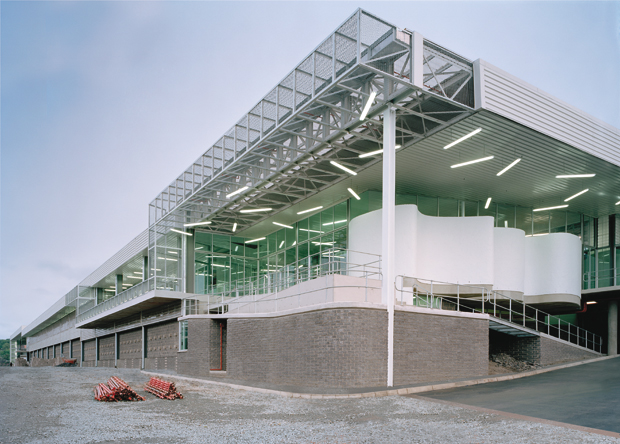
The Proud Heritage clothing campus factory, Don Albert and Partners This building responds to Durban’s tropical climate with a lightweight construction. There are two warehouse blocks, one made from concrete, the other from steel. Of course, the functional logistics of warehouse design – a need for security, a great deal of storage spaces, as well as space to accommodate delivery trucks – define the planning. Yet, the interior layouts are also flexible and can be easily changed to accommodate different businesses and uses. Employing a simple order of the structural column grids, the design introduces a playful entrance sequence to the southern warehouse, which draws on the fashion world’s fascination with the visual. This interest takes the form of visual puns on the notion of a ramp, the folded curtain form and the gridded façade, questioning the idea of a building as an ornamental object. You'll find a whole world of architectural wonder in the Phaidon Atlas. Sign up here for a free trial.